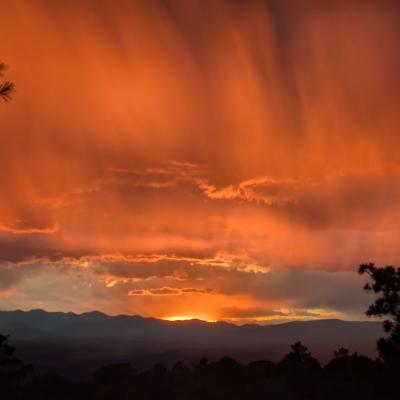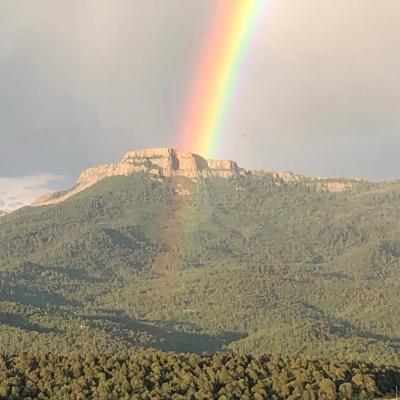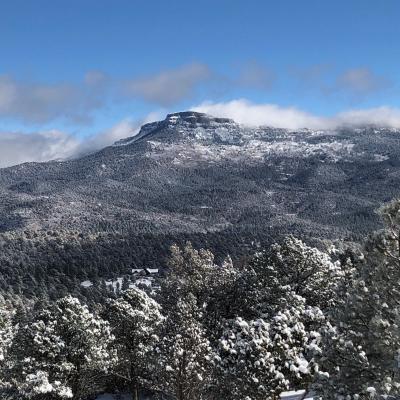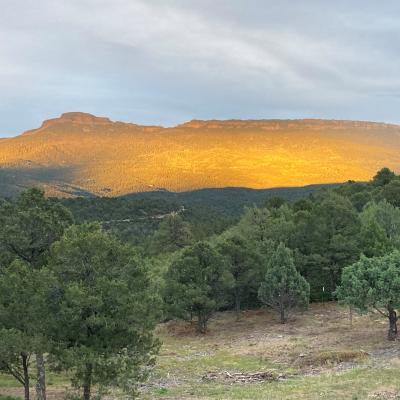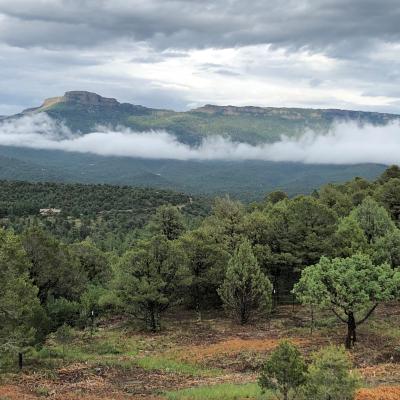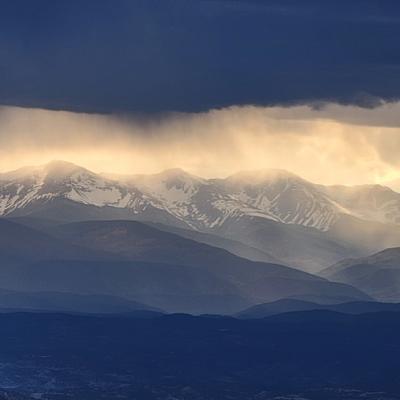High Altitude Gardening


Santa Fe Trail Ranch
High Altitude Gardening
How To - High Altitude Gardening
High Altitude Gardening
I’ve been a gardener and plant lover since I was about 19. I discovered by accident that I had the green thumb and learned how to use it. I read everything I could get my hands on. Now we have YouTube, Facebook pages and podcasts to educate ourselves. The FB pages I follow are Purgatoire Valley Gardeners- local, Gardeners of Colorado- state and Addicted to Gardening- global.
Before I moved here I was already reading books on Colorado gardening, the zone 5, native plants and wildflowers. I was not very excited to have to learn so much for this adjustment at first. There’s only four months of weather to plan on and that doesn’t even happen until June 1st. Here’s what I’ve learned so far.
● Build raised beds
● Make a water catchment system
● Buy from a good seed company
● Greenhouses are optional and not all the same


Raised beds have multiple reasons for being a good choice for vegetable gardening. You can make your beds as low as 10 inches or over 30 inches. Higher beds help with mobility issues and it’s easier on the back. Depending on what you want to grow; be mindful not to grow tall vegetables in waist high beds. Having raised beds gives you control to create your own soil. Our local soil is clay and very poor for growing most vegetables. When we started we lightly tilled the soil then covered it with a layer of broken sticks and dead leaves, next we added mulch, then a layer of compost and topsoil mixed together. Many packaged top soil or garden soil for sale in stores still need more added to it such as vermiculite or even perlite to make it fluffy and easy to water.
You will have less damage from rodents and other pests when you use raised beds.
Try to create a water catchment system for your garden. Rain water is so much better for our gardens and you can tell the difference. I collect rainwater from our gutters on the greenhouse and it feeds into a reservoir. Make sure your reservoir is painted black or covered in a dark cloth. This prevents algae from growing in your water.
Since I’m in a new planting zone I learn something new every year. This year it was the importance of good seeds, learning native varieties and xeriscaping using less water without sacrificing beauty or color. Seeds can be expensive and they get old. Store your seeds indoors away from fluctuating temperatures. Make sure to have the date on them. Old seeds will still germinate but not as quickly as new or fresh seeds. I planted all of my old seeds just to see what would come up. Over a month later I saw some sprouts. Later than that more seeds started popping up. I was not prepared for everything to be growing! I had already planted new seeds in some containers and then the old ones finally sprouted.
I have had a greenhouse at every place I have lived. My wonderful husband has made that possible. My current greenhouse will be the first I’ve had that I might actually grow vegetables in this winter. You don’t have to have a greenhouse but it can really help. We just got electricity to it this summer. We have planting beds on both sides and a solar powered fan for ventilation.
A remote thermometer helps us monitor the temperature from inside the house.
I have spinach, two different leaf lettuce, green onions, radishes, carrots, cauliflower and cabbage sprouting for this first experimental winter crop.


Most importantly don’t start out too big on gardening when you are a novice. The unpredictable nature of growing plants, flowers and vegetables can be discouraging if you don’t manage your expectations. Start out small such as a flowerbed close to the house or a couple of large pots on the patio or deck. Plant a single cherry tomato plant or pepper plant and see if it’s a commitment you can do. It’s very rewarding and everything doesn’t have to be started from seed. Visit nurseries for small starters of flowers or vegetables. Who knows you may discover a talent or gift you didn’t know you had. You can eat your rewards or put them in a vase?
I have met many of the residents who garden and I would like all of us to know each other. Even with all of us living on this ranch we have different landscape challenges. We may have the same problems or solutions. Share them on our Facebook page and pictures of your triumphs. I look forward to it.
Article By: Lori Clark

